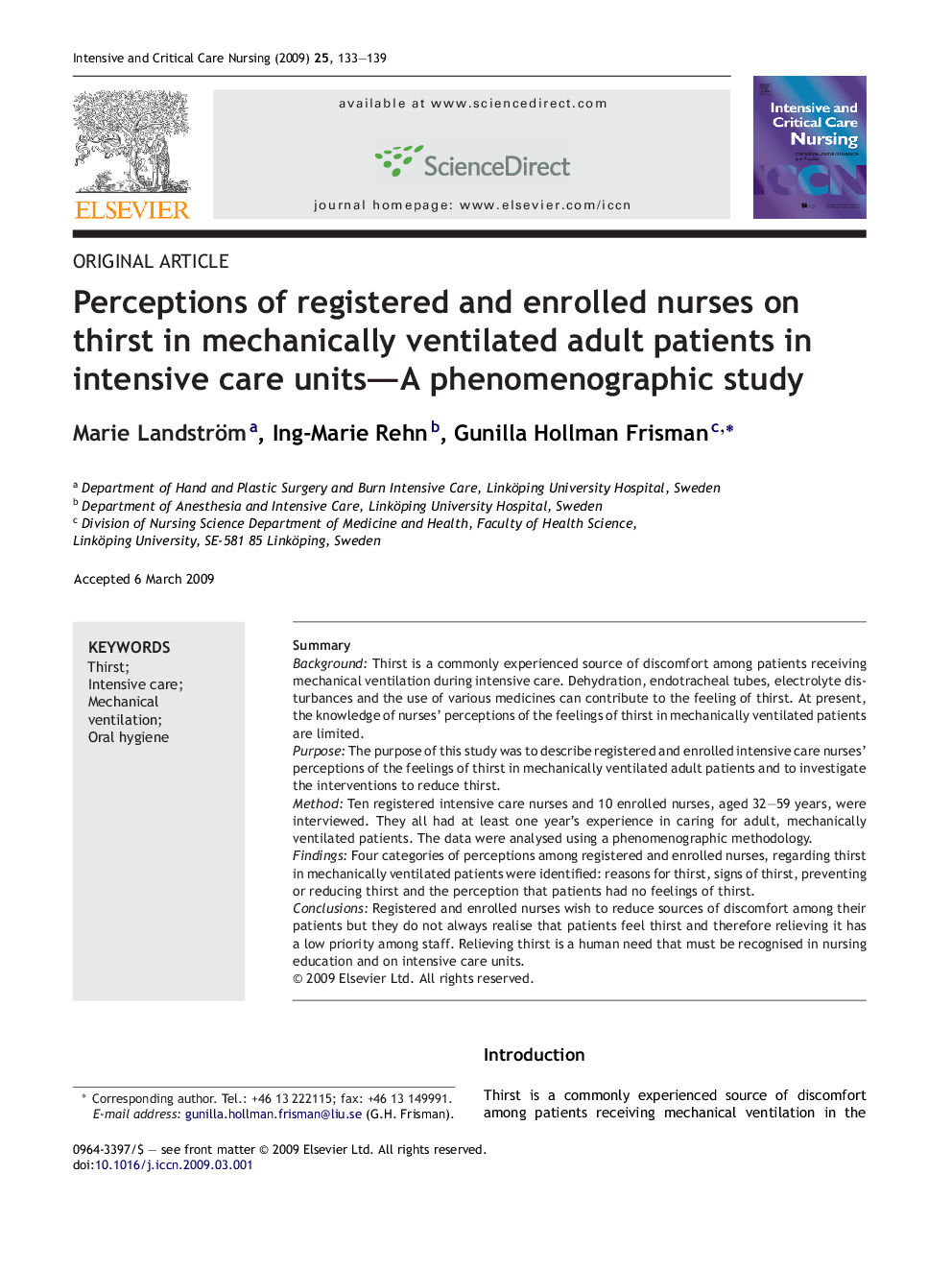| Article ID | Journal | Published Year | Pages | File Type |
|---|---|---|---|---|
| 2653471 | Intensive and Critical Care Nursing | 2009 | 7 Pages |
SummaryBackgroundThirst is a commonly experienced source of discomfort among patients receiving mechanical ventilation during intensive care. Dehydration, endotracheal tubes, electrolyte disturbances and the use of various medicines can contribute to the feeling of thirst. At present, the knowledge of nurses’ perceptions of the feelings of thirst in mechanically ventilated patients are limited.PurposeThe purpose of this study was to describe registered and enrolled intensive care nurses’ perceptions of the feelings of thirst in mechanically ventilated adult patients and to investigate the interventions to reduce thirst.MethodTen registered intensive care nurses and 10 enrolled nurses, aged 32–59 years, were interviewed. They all had at least one year's experience in caring for adult, mechanically ventilated patients. The data were analysed using a phenomenographic methodology.FindingsFour categories of perceptions among registered and enrolled nurses, regarding thirst in mechanically ventilated patients were identified: reasons for thirst, signs of thirst, preventing or reducing thirst and the perception that patients had no feelings of thirst.ConclusionsRegistered and enrolled nurses wish to reduce sources of discomfort among their patients but they do not always realise that patients feel thirst and therefore relieving it has a low priority among staff. Relieving thirst is a human need that must be recognised in nursing education and on intensive care units.
